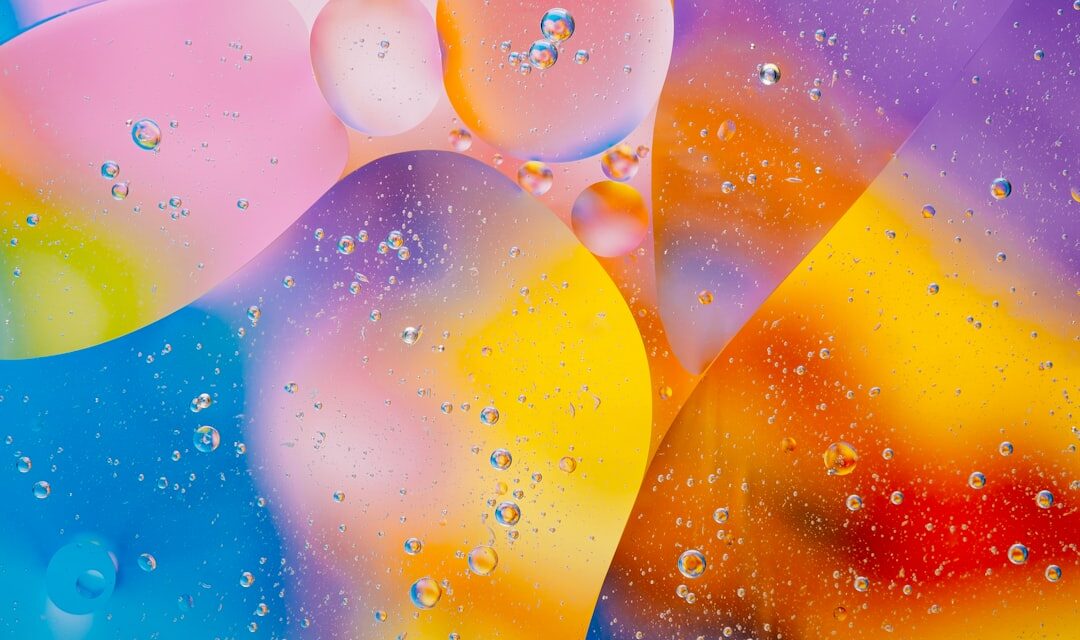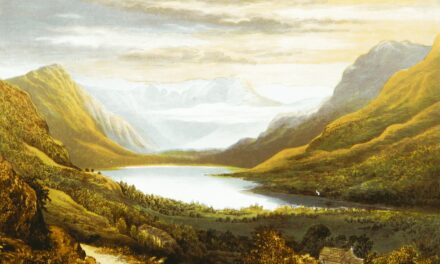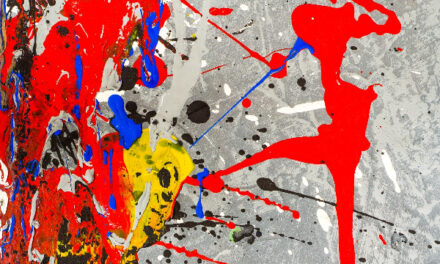Fauvism was a significant art movement that emerged in the early 20th century, particularly in France. The term “Fauvism” derives from the French word “fauve”, meaning “wild beast”. This movement is characterised by its bold use of colour, simplified forms, and departure from traditional representational art.
Fauvist artists aimed to express emotion and feeling through their use of colour and form, rather than striving for a realistic depiction of the world. Fauvism is often regarded as a precursor to subsequent modern art movements, such as Cubism and Expressionism. Although short-lived, the movement had a lasting impact on the art world, influencing generations of artists to come.
Fauvism is distinguished by its vibrant and non-naturalistic use of colour, as well as its rejection of traditional perspective and form. Fauvist artists sought to evoke an emotional response from the viewer through their use of colour and form, rather than aiming for a realistic representation of the world. The movement was also influenced by the work of Post-Impressionist artists such as Paul Cézanne and Vincent van Gogh, who likewise experimented with colour and form in their work.
Fauvism represented a radical departure from the artistic conventions of the time, and its bold use of colour and form both shocked and intrigued audiences and critics alike.
Summary
- Fauvism is an early 20th-century art movement known for its bold use of color and simplified forms
- Fauvism originated in France in the early 1900s, with artists like Henri Matisse and André Derain leading the movement
- Key characteristics of Fauvism include vibrant, non-naturalistic colours, simplified forms, and a focus on emotional expression
- Influential Fauvist artists include Henri Matisse, André Derain, Raoul Dufy, and Kees van Dongen
- Fauvism had a significant impact on the art world, influencing later movements such as Expressionism and Abstract art
The origins of Fauvism
The Break from Tradition
Fauvist artists sought to break free from the constraints of traditional representational art and explore new ways of expressing emotion and feeling through their use of colour and form.
Influences from Literature
The movement was also influenced by the work of the Symbolist poets and writers of the time, who sought to express emotion and feeling through their use of language.
The First Exhibition and Its Impact
The first exhibition of Fauvist artwork took place in 1905 at the Salon d’Automne in Paris, where the work of artists such as Henri Matisse, André Derain, and Maurice de Vlaminck caused a sensation. Critics and audiences were shocked by the bold use of colour and simplified forms in the artwork, leading one critic to describe the artists as “les fauves” or “wild beasts.” Despite the initial shock and controversy, Fauvism quickly gained a following among artists and collectors, and its influence spread throughout Europe and beyond.
Key characteristics of Fauvism

Fauvism is characterized by its bold use of color, simplified forms, and a rejection of traditional perspective and form. Fauvist artists sought to evoke an emotional response from the viewer through their use of color and form, rather than aiming for a realistic representation of the world. The movement was also influenced by the work of Post-Impressionist artists such as Paul Cézanne and Vincent van Gogh, who also experimented with color and form in their work.
Fauvism was a radical departure from the artistic conventions of the time, and its bold use of color and form shocked and intrigued audiences and critics alike. Fauvist artists often used non-naturalistic colors to convey emotion and feeling in their work. They also simplified forms and rejected traditional perspective, creating compositions that were often flat and two-dimensional.
Fauvism was also characterized by its use of thick, expressive brushstrokes, which added to the emotional impact of the artwork. The movement was short-lived but had a lasting impact on the art world, influencing generations of artists to come.
Influential Fauvist artists
Henri Matisse is perhaps the most well-known Fauvist artist, known for his bold use of color and simplified forms. Matisse’s work is characterized by its vibrant palette and expressive brushwork, as well as its rejection of traditional perspective and form. Another influential Fauvist artist is André Derain, whose work also featured bold colors and simplified forms.
Derain’s paintings often depicted scenes of everyday life, such as landscapes and figures, but with a radical departure from traditional representational art. Maurice de Vlaminck was another important figure in the Fauvist movement, known for his expressive use of color and form. Vlaminck’s work often depicted scenes of nature, such as landscapes and rivers, with a bold and non-naturalistic use of color.
Other influential Fauvist artists include Raoul Dufy, Kees van Dongen, and Georges Braque, who all experimented with color and form in their work.
Fauvism’s impact on the art world
Fauvism had a significant impact on the art world, influencing generations of artists to come. The movement’s bold use of color and rejection of traditional perspective and form paved the way for future modern art movements such as Cubism and Expressionism. Fauvism also challenged the artistic conventions of the time, shocking and intriguing audiences and critics alike with its radical departure from traditional representational art.
The influence of Fauvism can be seen in the work of later artists such as Pablo Picasso and Wassily Kandinsky, who also experimented with color and form in their work. Fauvism’s impact can also be seen in the development of abstract art, as artists sought new ways of expressing emotion and feeling through their use of color and form. The movement’s influence spread throughout Europe and beyond, shaping the course of modern art for decades to come.
Fauvism’s legacy

The Enduring Impact of Fauvism’s Aesthetic
The movement’s bold use of colour, simplified forms, and rejection of traditional perspective continue to inspire artists today. Fauvism’s emphasis on emotion and feeling as expressed through colour and form has had a lasting impact on the way we understand and appreciate art.
The Timeless Appeal of Fauvist Masters
The legacy of Fauvism can also be seen in the continued interest in the work of its key artists, such as Henri Matisse and André Derain. Their bold use of colour and expressive brushwork continue to captivate audiences and inspire new generations of artists.
Fauvism’s Ongoing Influence on Contemporary Art
Fauvism’s legacy is also evident in the ongoing exploration of non-naturalistic colour in contemporary art, as artists continue to seek new ways of expressing emotion and feeling through their use of colour and form.
How to recognize Fauvist artwork
Fauvist artwork can be recognized by its bold use of color, simplified forms, and rejection of traditional perspective. Fauvist artists sought to evoke an emotional response from the viewer through their use of color and form, rather than aiming for a realistic representation of the world. The movement was also characterized by its rejection of traditional artistic conventions, shocking audiences with its radical departure from traditional representational art.
Fauvist artwork often features vibrant non-naturalistic colors that convey emotion and feeling. The forms in Fauvist artwork are often simplified and two-dimensional, with a rejection of traditional perspective. The paintings also feature thick, expressive brushstrokes that add to the emotional impact of the artwork.
Overall, Fauvist artwork is characterized by its boldness, expressiveness, and emotional intensity, making it instantly recognizable to those familiar with the movement.
If you are interested in learning more about the art movements that followed Fauvism, you may want to check out this article on Post-Impressionism. Post-Impressionism was a movement that emerged in the late 19th century and had a significant impact on the development of modern art. Artists such as Vincent van Gogh and Paul Cézanne were key figures in this movement, and their work paved the way for the artistic innovations of the 20th century. To read more about Post-Impressionism, click here.
FAQs
What is Fauvism?
Fauvism was an art movement that emerged in the early 20th century, characterized by the use of vivid colors, simplified forms, and a focus on emotional expression rather than realistic representation.
When did Fauvism begin?
Fauvism began around 1905 and lasted for a few years, with its peak occurring between 1905 and 1907.
Who were the key artists associated with Fauvism?
The key artists associated with Fauvism include Henri Matisse, André Derain, Maurice de Vlaminck, Raoul Dufy, and Kees van Dongen.
What influenced the Fauvist artists?
Fauvist artists were influenced by the works of Post-Impressionist painters, particularly the use of bold colors and expressive brushwork. They were also influenced by non-Western art, such as African masks and textiles.
What were the main characteristics of Fauvist art?
The main characteristics of Fauvist art include the use of bold, non-naturalistic colors, simplified and distorted forms, and a focus on conveying emotion and feeling rather than accurate representation.
How did the public and art critics react to Fauvism?
The public and art critics initially reacted with shock and disbelief to Fauvist art, as it deviated significantly from traditional artistic conventions. However, over time, Fauvism gained recognition and acceptance as a significant art movement.
What was the legacy of Fauvism?
Fauvism had a significant impact on the development of modern art, particularly in its influence on subsequent movements such as Expressionism and Abstract art. The use of bold colors and emotional expression continued to be influential in the art world.




